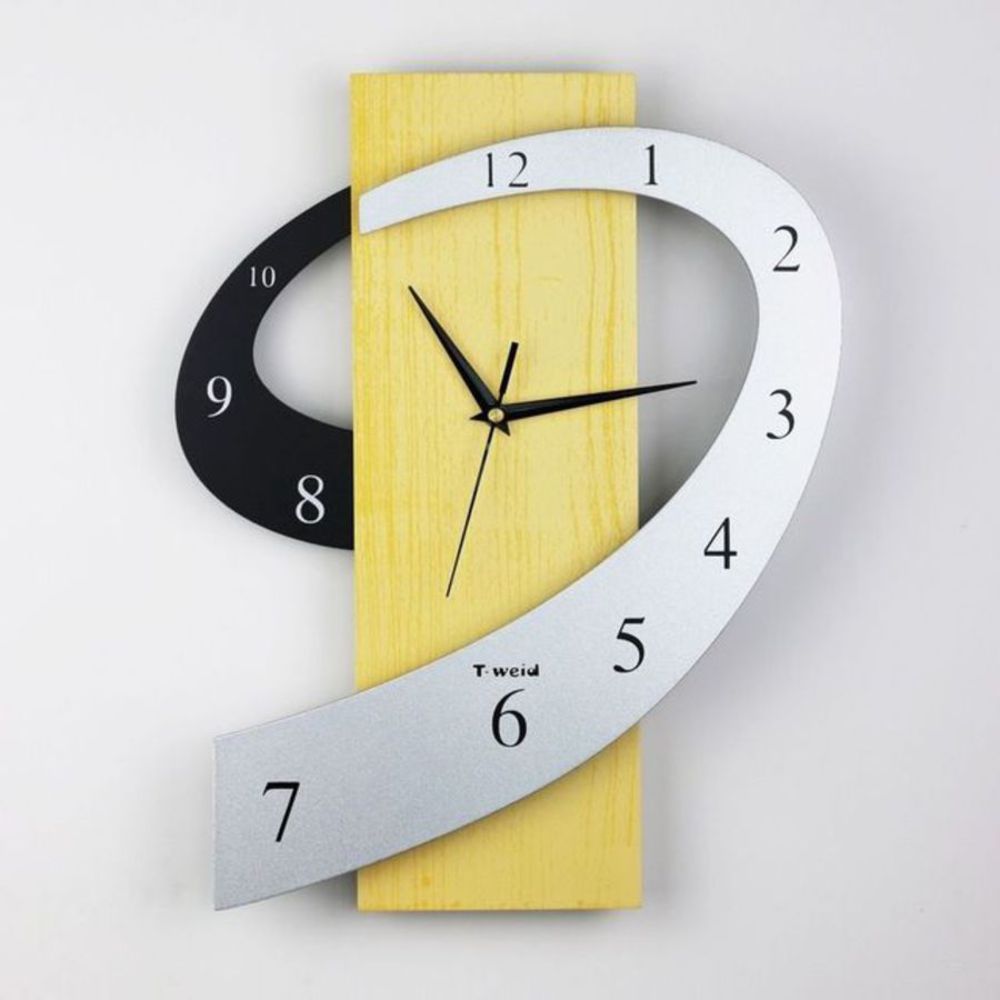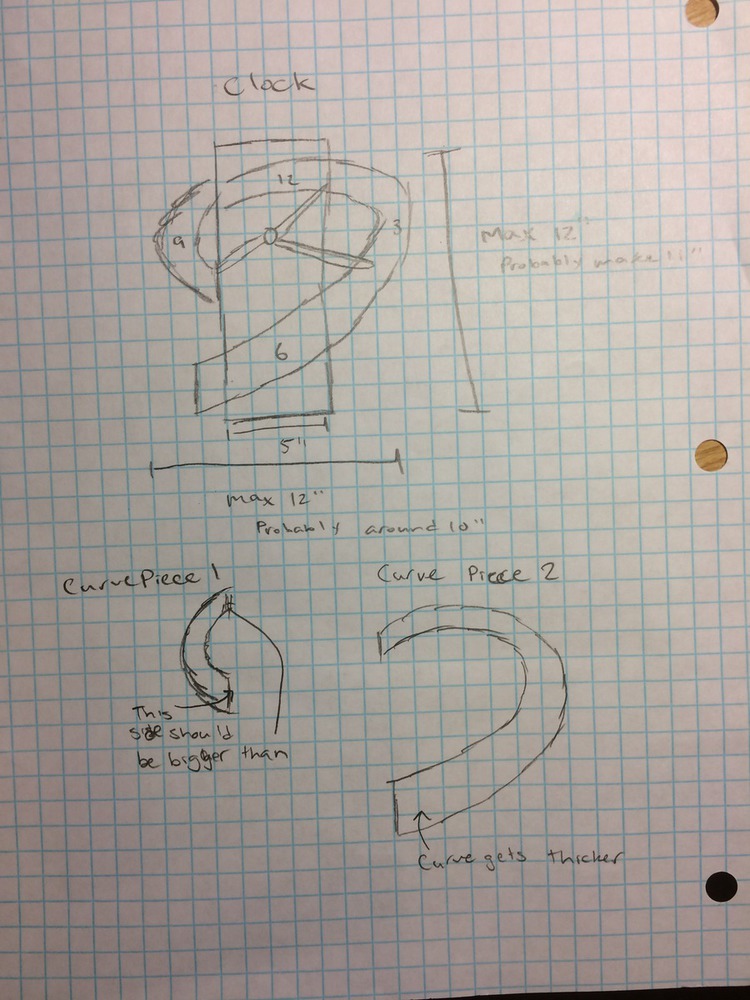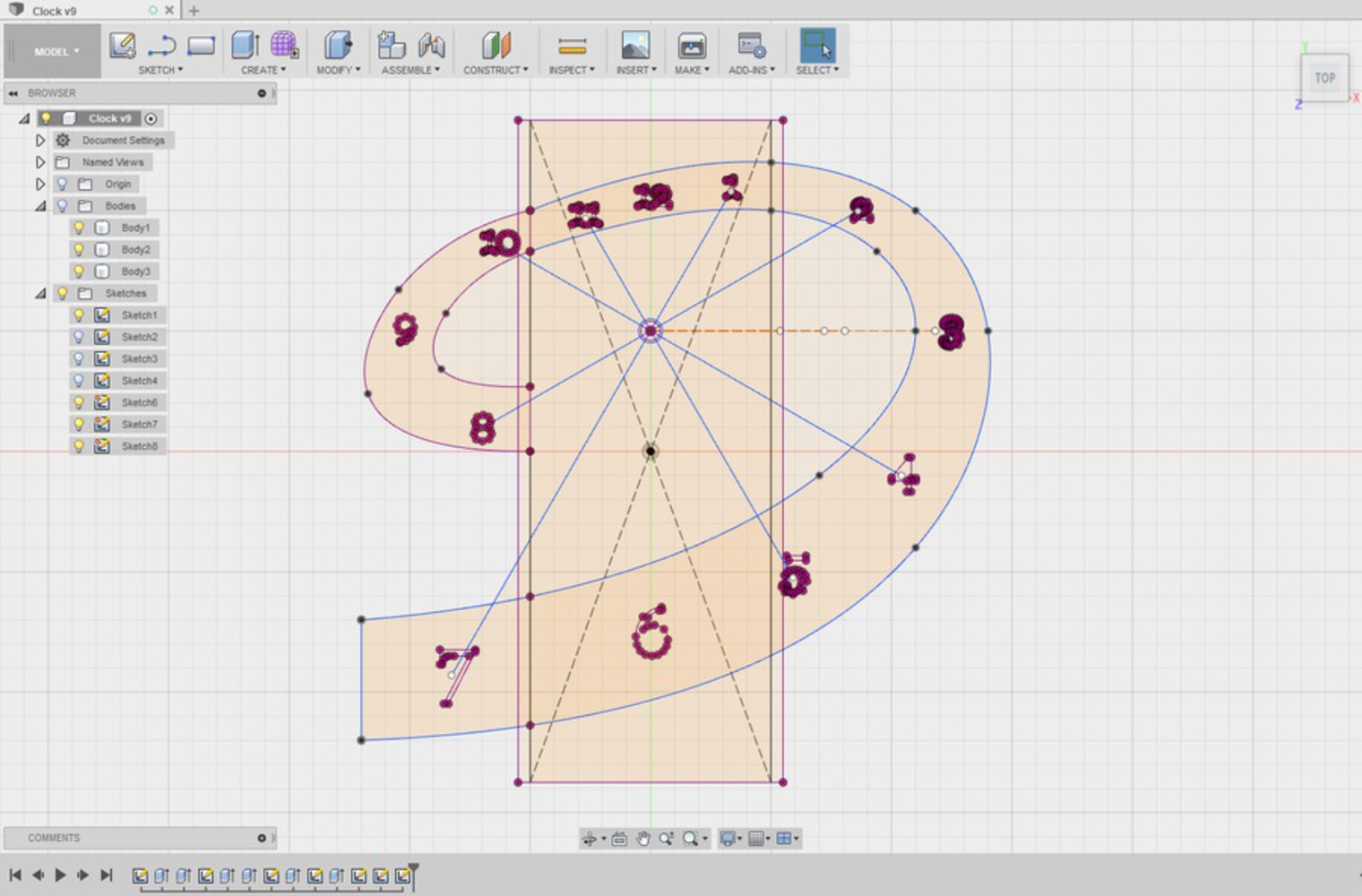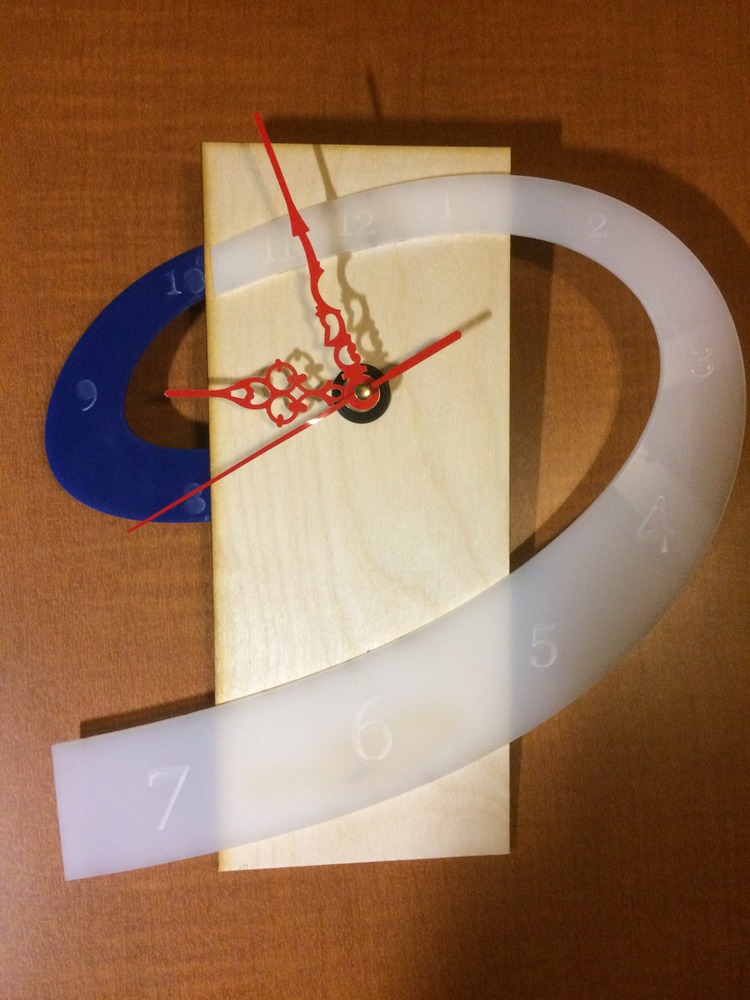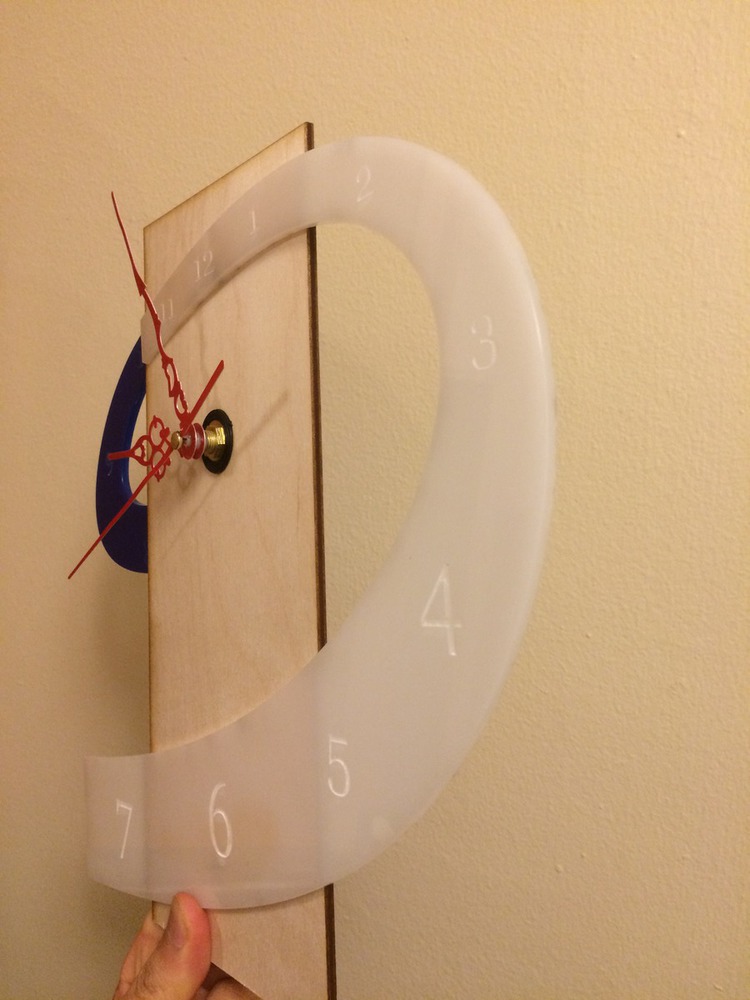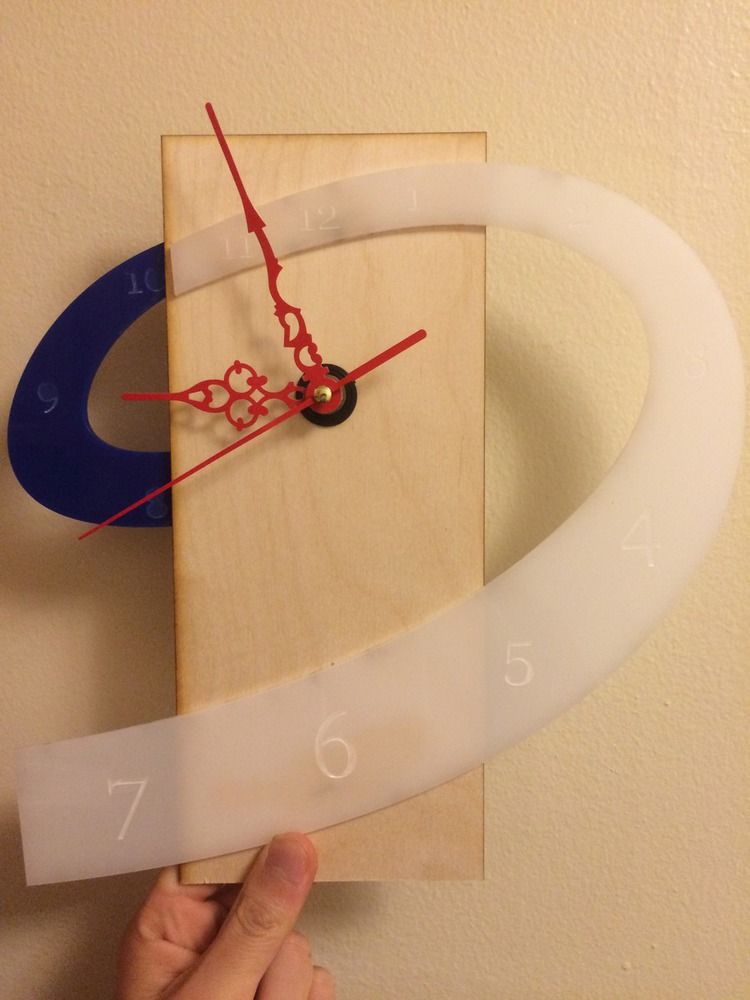Process + Procedure
The first step for this project was to sketch out the dimensions of the clock and the general shape. This was mostly helpful for envisioning what my final clock would look like and was referenced during the modelling of the clock. The dimensions of the clock were made so that I would only need pieces from 12 by 12 inch sheets of acrylic and wood, reducing costs.
Next, I used Fusion360 to generate the model for the clock. First, I created the middle plank that the two curves of the clocked would be attached to. Then, I tried playing with the arc tool to make the curves that I wanted. However, I found that the arcs could not be customized in the ways that I intended so I instead used the spline tool to manually draw the curves. After creating the points, I tinkered with them until I found the shape that I wanted. The last thing to do in the sketch was to draw lines for every 30 degrees from the center spindle hole in the middle plank. This sketch was created so that I would place the numbers of the clock in the correct positions. Once the sketch was complete, the curves and middle piece were extruded. After the numbers were cut into the curve bodies, projections were created that would be saved as the final DXF files which were used to finally cut the pieces. The DXF files were imported into Lasercut and cut individually. The overall time that it took to cut all three pieces was about 15 minutes. After the cuts were complete, I used alcohol wipes to clean the acrylic and superglue to glue the pieces together. To complete the clock, I installed the clock kit.
One problem that I ran into while importing the DXF files into the Lasercut program was that some of the numbers (4 and 6) did not look very complete in the Lasercut preview. To resolve this, I had to delete them and add text from within the Lasercut program. One problem with this is that the 4 and 6 may not be lined up as well since I did them by eye whereas all the other numbers were carefully placed according to the angled lines.
